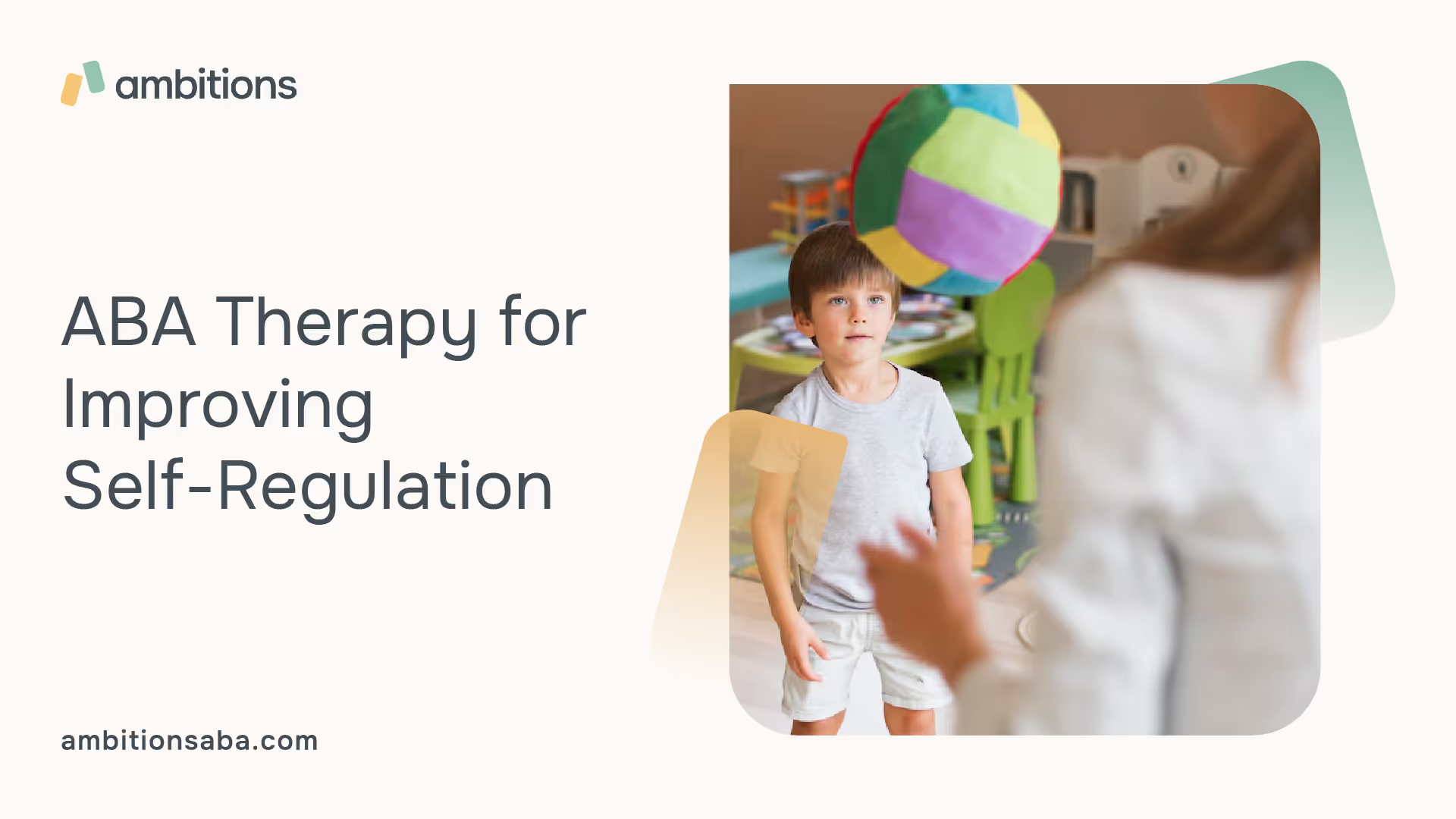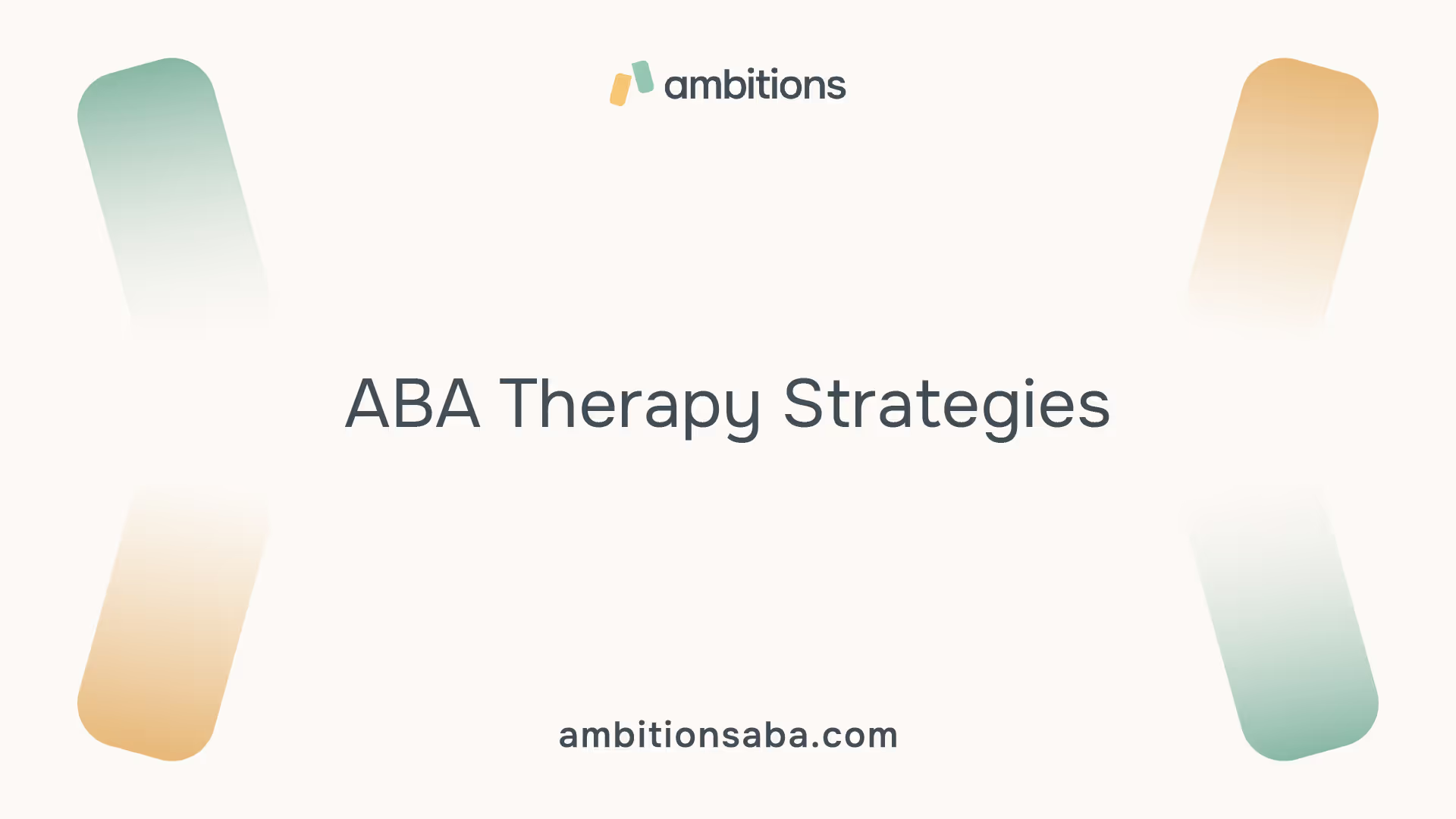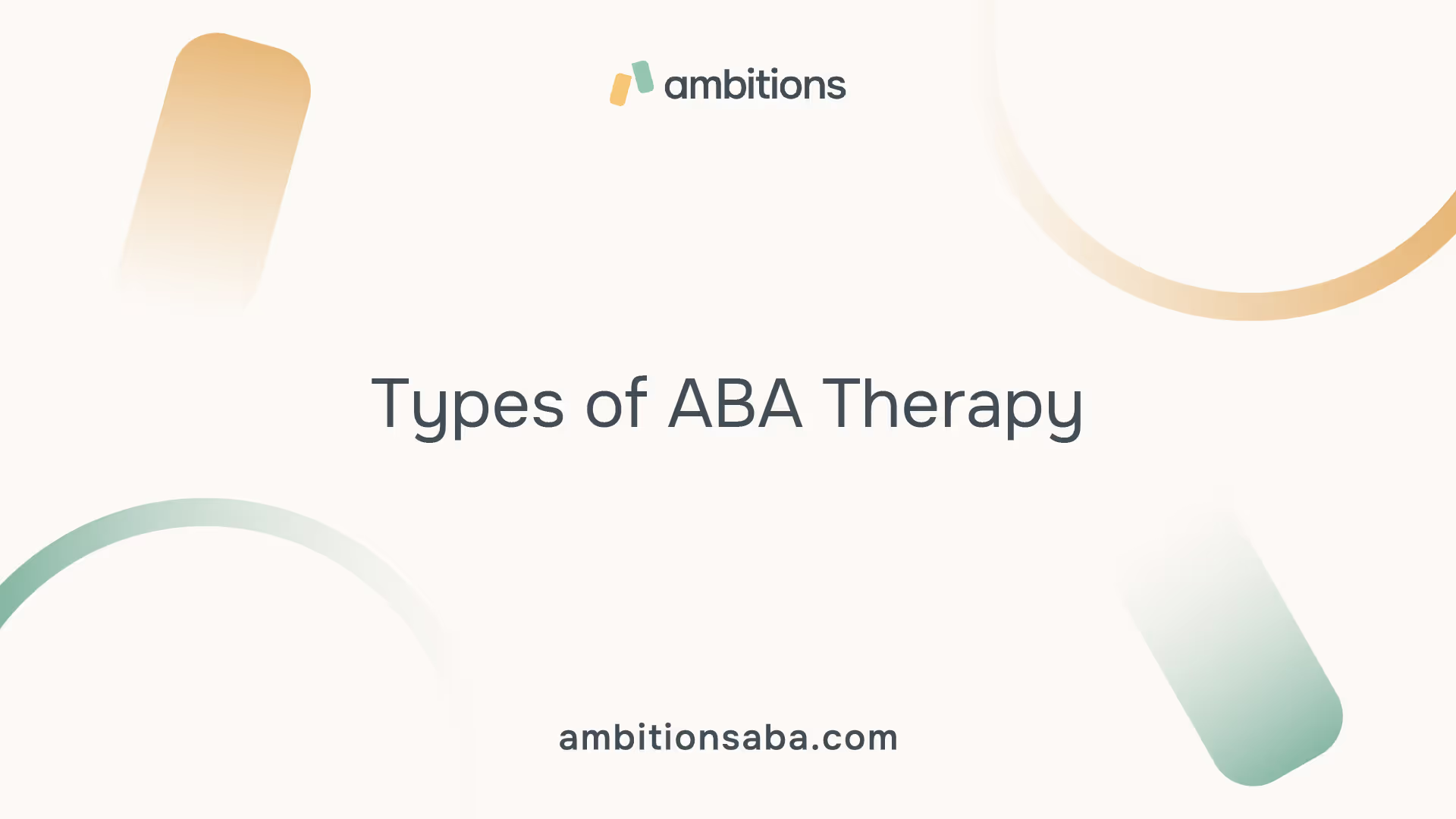Strengthening Families Through Effective Parenting Interventions

Understanding ABA Therapy
Helping kids with autism spectrum disorder (ASD) thrive often means diving into ABA therapy. Short for Applied Behavior Analysis, ABA is all about using science to improve behavior. Think of it as a toolkit for better habits and emotional control.
ABA therapists use data and research to figure out what makes a child tick and then create plans to encourage positive changes.
Basics of ABA Therapy
ABA therapy isn't just a shot in the dark; it's backed by solid research. Big names like the American Psychological Association and the American Academy of Child and Adolescent Psychiatry give it a thumbs-up. This means the methods used in ABA have been tested and proven to work, especially for kids with autism.
At its core, ABA therapy aims to make meaningful changes in behavior. Therapists get to know each child, figure out what influences their actions, and then craft strategies to encourage good behavior. It's not a one-size-fits-all approach; each plan is tailored to fit the child's unique needs and strengths.
Importance of Emotional Regulation
One of the big focuses in ABA therapy is helping kids manage their emotions. Kids with autism are four times more likely to struggle with emotional control compared to their peers. This makes learning to regulate emotions a top priority.
ABA therapists teach kids to recognize and express their feelings in healthy ways. This involves identifying emotions, understanding what triggers them, and using coping strategies to manage reactions.
Tools like visual aids, social stories, and structured activities are often used to build these skills.
But the benefits of emotional regulation go beyond therapy sessions. ABA therapy equips kids with the skills they need to handle social situations and daily challenges, boosting their overall well-being. By mastering emotional regulation, kids with autism can lead more fulfilling lives.
Understanding ABA therapy and its focus on emotional regulation is key to effective support. Parents and caregivers can work closely with ABA therapists to help their children grow emotionally and thrive.

ABA Therapy Strategies
Helping kids with autism manage their emotions can be a game-changer. ABA therapy offers some nifty tricks to make this happen. Let's talk about two big ones: handling emotions and using play in therapy.
Handling Emotions
Kids with autism often struggle with their feelings, which can show up as biting, hitting, tantrums, or even withdrawing from social situations. ABA therapy has some cool ways to help kids get a grip on their emotions.
Here are some tricks for handling emotions in ABA therapy:
- Emotion charts: Think of these as mood maps. They help kids point out and name their feelings. It's like giving them a GPS for their emotions.
- Modeling good behavior: Therapists and caregivers show kids how to react in different situations. It's like giving them a cheat sheet for handling emotions.
- Positive feedback: When kids handle their emotions well, they get a high-five or a reward. This makes them want to keep doing it.
- Social interaction: Getting kids to play and interact with others helps them practice sharing, taking turns, and showing their feelings in a good way.
- Coping tricks: Teaching kids stuff like deep breathing, counting to ten, or using a favorite toy to calm down can help them manage their emotions better.
Using Play in Therapy
Play isn't just fun; it's a powerful tool in ABA therapy. It helps kids understand their feelings and figure out how to act in different situations.
By mixing play into therapy, therapists create a safe space where kids can practice handling their emotions. Pretend play, for example, lets kids explore different feelings and learn how to react in various social settings.
Play-based therapy might include:
- Role-playing: Acting out different emotions with toys or props.
- Cooperative play: Games that require sharing and taking turns.
These activities make learning about emotions fun and interactive.
By using these tricks for handling emotions and mixing play into therapy, ABA therapy helps kids with autism learn to understand and manage their feelings. With practice and positive reinforcement, they can improve their emotional well-being and social skills.

Types of ABA Therapy
ABA therapy, or Applied Behavior Analysis, offers various methods to support kids with autism. These include DTT (Discrete Trial Training), ESDM (Early Start Denver Model), and VBI (Verbal Behavior Intervention). Each has its own perks and focuses on different developmental areas.
DTT Approach
DTT is a structured, one-on-one method where skills are broken down into small steps. The therapist gives clear instructions, and the child’s correct responses are rewarded with praise, tokens, or small treats.
This method is great for teaching specific skills like language, social interactions, and academics. The repetitive nature helps kids with autism learn new skills and build a solid foundation for future learning.
ESDM Approach
ESDM blends ABA principles with play-based activities, focusing on social engagement and communication. Therapists create a fun, interactive environment that incorporates the child’s interests and strengths.
This method builds social skills, joint attention, imitation, and language development through play. By following the child’s lead, therapists make learning enjoyable and effective.
VBI Approach
VBI, or Verbal Behavior Intervention, zeroes in on language and communication. It teaches language as a form of communication, not just rote repetition. Therapists assess the child’s language abilities and target specific verbal behaviors like requesting, labeling, and conversation.
Techniques like visual supports, modeling, and prompting help boost language skills, vocabulary, and the ability to express needs and wants.
Understanding these ABA therapy methods helps parents choose the best fit for their child. Consulting with professionals and considering the child’s unique needs and preferences is crucial. For more info, check out our articles on ABA therapy and autism awareness and ABA therapy and evidence-based practices.
Benefits of Early ABA Intervention
Jumping into ABA therapy early can make a world of difference for a child's growth and happiness. Studies show that starting ABA therapy before age four can boost development, especially in social and communication skills.
Impact on Development
Starting ABA therapy as young as two can bring the best results. Little kids' brains are like sponges, soaking up new behaviors and learning quickly. Early intervention helps kids with autism make big strides in many areas.
ABA therapy teaches kids with autism important skills for self-control, socializing, and independence. With structured, personalized plans, kids learn to handle their behaviors, emotions, and reactions to different situations. This early start builds a strong base for future growth.
Social and Communication Skills
One of the biggest perks of early ABA intervention is better social and communication skills. ABA therapy uses proven methods to teach kids with autism how to interact socially, read nonverbal cues, and communicate effectively.
Using tools like social stories, role-playing, and peer modeling, ABA therapists guide kids through social situations, helping them form meaningful connections. These methods focus on improving social give-and-take, turn-taking, shared attention, and practical language skills.
Early ABA intervention also boosts communication skills. Therapists work on both understanding and expressing language, teaching alternative ways to communicate when needed, and encouraging appropriate language use in different settings.
The aim is to give kids the tools to express their wants, needs, and thoughts clearly.
By tackling social and communication challenges early with ABA therapy, kids with autism can build the skills they need for successful interactions and meaningful relationships. The benefits of early ABA intervention in these areas can have lasting positive effects on a child's life.
For parents looking to support their child with autism, early ABA intervention can lay a solid foundation for future success. With targeted, evidence-based techniques, ABA therapy helps kids develop crucial self-regulation skills, improve social interactions, and enhance communication abilities.
ABA Therapy Techniques
So, you're a parent looking into ABA therapy to help your child with autism manage their emotions better. Let's break down what ABA (Applied Behavior Analysis) therapy is all about and how it can make a difference.
Behavior Modification
Think of behavior modification as a way to swap out less helpful behaviors for better ones. ABA therapists start by figuring out which behaviors need a makeover. They watch closely to see what triggers these behaviors and then come up with a game plan to change them.
Therapists work hand-in-hand with kids, breaking down tasks into bite-sized steps. It's like teaching someone to ride a bike with training wheels first.
Over time, kids learn to swap out challenging behaviors for ones that are more helpful and socially acceptable.
Positive Reinforcement
Positive reinforcement is like giving a high-five for good behavior. When a child does something right, they get a reward right away. This could be anything from a "Great job!" to a sticker or extra playtime.
The idea is to make the child want to repeat the good behavior because they know something nice will happen.
Therapists pick rewards that really matter to the child. It could be a favorite toy, a fun activity, or just some extra attention.
By linking good behavior with these rewards, kids start to build better self-control and emotional skills.
Putting It All Together
With behavior modification and positive reinforcement, ABA therapy helps kids with autism learn to manage their emotions and actions better. They get to understand what they're feeling and how to handle it, which makes life a lot smoother for everyone.
Self-Management in ABA Therapy
Self-management in ABA therapy is all about helping folks with autism spectrum disorder (ASD) take the reins of their own behavior and emotions. Think of it as giving them the tools to be their own boss when it comes to managing their actions.
By using these techniques, learners with ASD become more involved in their behavior plans, gaining a sense of control and independence.
Boosting Independence
One big goal of self-management in ABA therapy is to help individuals with ASD become more independent. The idea is to get them actively involved in their own self-management strategies. Sure, the ABA practitioner is still there to guide them, but over time, the learner takes on more responsibility for their behavior [4].
By encouraging independence, individuals with ASD pick up essential skills for everyday life. They learn to manage their behavior, emotions, and reactions to tough situations, which can lead to better social interactions, stress management, and adaptability [5].
This newfound autonomy gives them the confidence to handle various situations more effectively.
Self-Recording and Rewards
A crucial part of self-management in ABA therapy is self-recording and reinforcement. Learners with ASD are encouraged to keep track of their progress, which helps them become more aware of their actions and see how they're doing [4].
To keep them motivated, self-management plans often include rewards. For example, they might earn a treat or a fun activity after hitting certain goals.
This positive reinforcement makes them more likely to stick with their self-management strategies and keep making progress.
Using self-management in ABA therapy has a bunch of benefits. It promotes independence, reduces the need for constant external prompts, and helps individuals with ASD learn to handle their behavior, emotions, and reactions to challenging situations.
This can lead to better social interactions, improved stress management, and greater adaptability.
Self-management interventions in ABA therapy are backed by research and have shown positive results for people with ASD. They help improve academic and social skills, as well as daily living skills, making individuals more independent and less reliant on outside support.
By adding self-management techniques to ABA therapy, individuals with ASD can gain valuable skills that help them manage their own behavior, emotions, and reactions.
This not only boosts their independence but also sets them up for long-term success in self-regulation.
FAQs
Can ABA therapy be effective for children with self-regulation difficulties?
Yes, ABA therapy can be effective for children with self-regulation difficulties. Therapy is tailored to the child's needs and focuses on developing individualized strategies to help them manage their emotions and behaviors more effectively.
How does ABA therapy teach coping skills for self-regulation?
ABA therapy teaches coping skills by breaking down the skills into manageable steps, using role-playing and modeling, and providing opportunities for practice and reinforcement. Techniques such as deep breathing, relaxation exercises, and mindfulness may be included.
How is progress in self-regulation monitored in ABA therapy?
Progress is monitored through regular assessments and observations of the child's ability to use self-regulation strategies effectively. Therapists track improvements in emotional control, impulse control, and the use of coping techniques in various situations.
How can parents support self-regulation development at home?
Parents can support self-regulation development by modeling and reinforcing positive coping strategies, providing a consistent routine, helping the child practice self-regulation techniques, and offering praise and encouragement for successful self-regulation efforts.
Are there specific self-regulation strategies used in ABA therapy?
Specific strategies may include visual supports (such as emotion charts), social stories, sensory breaks, self-monitoring techniques, and structured routines. These strategies help the child understand and manage their emotional and behavioral responses.
Where can I find more information about ABA therapy for self-regulation?
More information can be found through resources such as the Association for Behavior Analysis International (ABAI), behavioral health professionals, and local ABA therapy providers. Consulting with therapists who specialize in self-regulation can also provide valuable insights and guidance.
References
[1]: https://heartlinksaba.com/emotional-regulation-in-aba/
[2]: https://www.autismparentingmagazine.com/aba-principles/
[3]: https://abacustherapies.com/understanding-aba-therapy-pros-and-cons-explained/
[4]: https://www.appliedbehavioranalysisedu.org/what-is-self-management-in-the-context-of-aba-therapy/
[5]: https://www.magnetaba.com/blog/aba-therapy-for-self-management-skills

